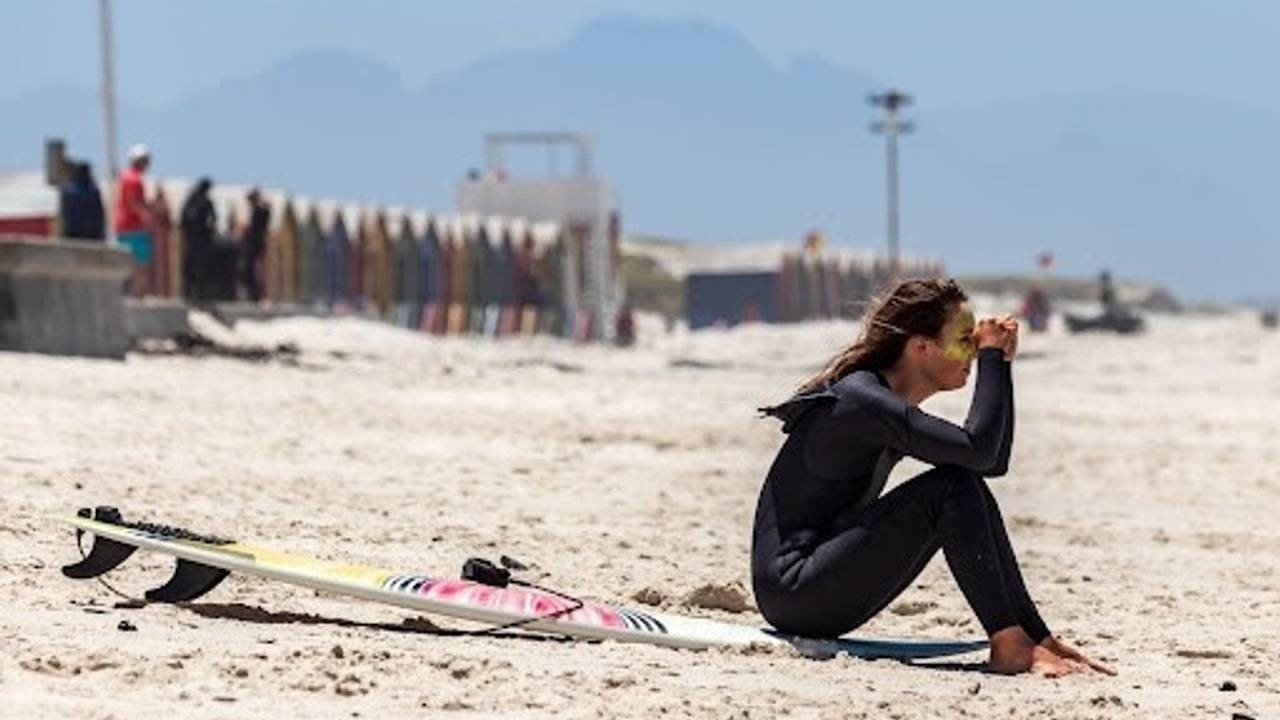The Problem with Stop-Start Training for Surfing and 5 Things to do about it
Sep 05, 2022
Image source: https://unsplash.com/photos/DYAJWDv199Y
How frustrating is it when you have the best intentions to train but you cannot seem to follow through?
You tell yourself this time will be different. You will run three times per week and go to the conditioning class at the gym. But when gym day comes, you’re exhausted from work and just don’t feel like going. Rather than commencing a smooth transition into regular exercise and ticking off that habit tracker, you have a stop-start relationship with your training and a yo-yo approach to training for surfing.
The Problem with Stop-Start Training
A stop-start training style can impact the level of adaptation you get from regular and persistent training. It also plays mind games with your beautiful head, escalating feelings of guilt, frustration, failure and not being good enough. Aside from knowing how to start surf conditioning training or what to do to improve your technique, ‘sticking to a training regime’ has been listed as the third biggest challenge for our Female Surfer Community*. So if you relate to the opening paragraph, you’re not alone.
Having been at the peak of performance, representing Australia, to juggling mumpreneur life, I have ridden the peaks and troughs of training routines. I have experienced the addiction of training daily as an elite-level athlete and, in contrast, the challenge of getting to the gym twice a week as a busy mum. I’ve also motivated hundreds of athletes to train regularly by finding what routine supports their training journey and leads to their success.
Women Surf Training Commitment – Why it’s a Challenge
If committing to a training regime has been difficult for you, understand this: many training and performance models, along with our concept of what ‘success’ is, have been created by men, based on male data and male social/lifestyle factors, then applied to women, which means that, from the get-go, women may not have learnt the best strategies for them. We are less ‘straight-line’. We ebb and flow both in a monthly cycle and across our lifespan. We need training strategies that adapt and support us!

Image source: https://unsplash.com/photos/uxSmRbhpo0U
When it comes to using training tools that support us, it helps to understand some of our gender-specific strengths. Here are five ways in which you can adapt your training strategies in a way that supports your biological, physical and mental facets as a woman.
1. Teamwork Makes the Best Work
One powerhouse-woman strength is that we work well in collaboration. Meaning that working as a team can help you exercise consistently. That doesn’t seem like rocket science. But what if your lifestyle doesn’t enable you to have a ‘team’ in the traditional sense? What if you live in a remote community or cannot attend group class timetables? Your team doesn’t need to be a physical team or even a group of people. It can be an accountability buddy. Someone you can collaborate with who knows or shares your goals and is committed to helping you achieve them. During the SURFAID Make a Wave Challenge I started a WhatsApp group with our team. We are busy individuals and live all over the world, so we often surf on our own. A simple group text that asks “how was your surf today?” is enough to keep everyone committed to our 30 waves in 30 days goal.
2. Manage Your Emotional Attachment
Whether we go to the gym or go for that surf, exercise is never a mindless job to us. Women attach feelings to physical activity, so we can be easily deterred from training by feelings of guilt around other activities we have going on, or feelings of not being good enough compared to others (for more information read my blog on barriers to female surfers surfing on the regular)
I use some handy tricks to reduce the impact of negative emotional attachments to exercise. Most effective is automating the process of exercising, using ‘preparation’ and ‘stacking’ techniques. I pre-prepare everything I need for the training session the night before or the morning of. Next, I stack training on top of an activity that I am already doing. For example, if I take the dog for a walk in the morning, I then come home, let the dog outside and pick up my weights. I’ve also had fun stacking body-weight exercises onto clicking the kettle on for my morning cup of lemon water. The more I automate, the less I attach emotion to starting the exercise task. Training becomes more of an 'add-on' activity with minimal decision making, rather than an overwhelming undertaking.
Another tool that works well for managing your emotional attachment to training is ‘reduction’. Often a female's emotional attachment to sport is bigger-picture: we become anxious or overwhelmed when the outcome seems too big in the moment. Pre-menstrually we tend to over-worry and catastrophise, depending on our anxiety profiles. So breaking tasks down into manageable, achievable parts works wonders. For example, I often ask clients, “what is the ONE thing you want to work on in this surf session?” which allows them to hone in and focus on something specific, such as looking down the line. As a tool, it reduces your training to one task, versus the whole activity of surfing. I may also say to a client, “think about going to the gym for 10 minutes, not an hour”, breaking it down into something manageable. You will end up training for longer, but this strategy is excellent for reducing the initial overwhelm.
3. Embrace Your Ebb and Flow by Having a ‘Plan B’
Next, I would like you to accept that you ebb and flow. Training periodisation (planning out a season's worth of strength and conditioning training) has historically been ‘linear’, with planned peaks and troughs, to reduce the impacts of over-training and to allow the athlete to hit an event at their peak. Training is organised around meeting key heart rate targets, exercise duration and frequency goals, along with skill acquisition and resistance training goals, according to the time of year or season. As an athlete who was brought up on this traditional method of organising a training regime, I realise now that it didn’t account for one thing - my period. Also, I’m in a different life span and my symptoms have changed significantly. So the method of training I used in my 20's to early 30's is no longer suitable. Premenstrually, fatigue is a significant issue for me, and so is inflammation. I also experience back pain that limits my time in the surf and how I paddle. If I’m in the middle of a strength phase at the gym, lifting heavy weights, I fatigue too quickly and I increase my risk of injury. I almost have to scrunch up my training plan and throw it out the window. Except I don’t scrunch it up. I use my backup plan.
A backup plan is key to adhering to and maintaining training around your menstrual cycle, energy and motivation. Having clever ‘plan B’ training options enables you to sustain your training and work on other variables that still track you toward your goals. A plan B can also take ‘guilt’ out of the picture if previously your only option was to avoid exercise/training. An example could be returning to core stability work whilst laying on your back; this helps improve lumbar/pelvis stability when pain disrupts your movement. Train smart, using intelligent training options that suit the ebb and flows of your body. You don’t need to meet traditional training methods and the male status quo.
4. Don’t Forget your Rewards!
Another suggestion I want to make is to REWARD yourself. As a competitive athlete, the reward is often the medal, the trophy and standing on the podium singing your national anthem. But as a recreational athlete, what is your reward? How do you pat yourself on the back? And how often do you do this? Rewarding yourself is a key variable in the behavioural change pathway and reinforces a positive attachment to sport participation. In other words, you are more likely to keep going if you reward yourself for your efforts.
5. Keep Your Training Goals Front and Centre
Overarching all of these strategies is having a clear understanding of what it is you want to achieve and where you are at in comparison to that goal. Having a goal takes your exercise regime away from the boring realm of ‘training to train’ and helps give you direction and purpose. If you don’t have an idea of what your goals are, consider reading this blog on getting started.
As women, we can capitalise on what makes us unique as females, what makes us strong, and what makes us adaptable. Knowing how we work and where our strengths are, allows us to develop tools that will make committing to exercise easier. Find yourself an accountability buddy, manage your attachment to exercising, have a backup plan for your ebbs and flows, reward yourself for your efforts and keep your goals in mind – five key strategies that will help you achieve regular and sustainable training regimes.
We have built each of these elements (and more!) into the services and community we have created here at The Female Surfer. Whether you are aiming for barrelling reef breaks or just getting to the gym to feel stronger, use our expertise to support you. We want you to surf your best waves possible in this lifetime and we have your back.
If you’d like us to create a complete training for you (AND help you stick to it!), reach out to us today.
Yours in ocean loving,
Candice Land
Director, The Female Surfer
(and your Female Surfer accountability buddy)
*according to The Female Surfer survey September 2022
Stay connected with news and updates!
Join our mailing list to receive the latest news and updates from our team.
Don't worry, your information will not be shared.
We hate SPAM. We will never sell your information, for any reason.


